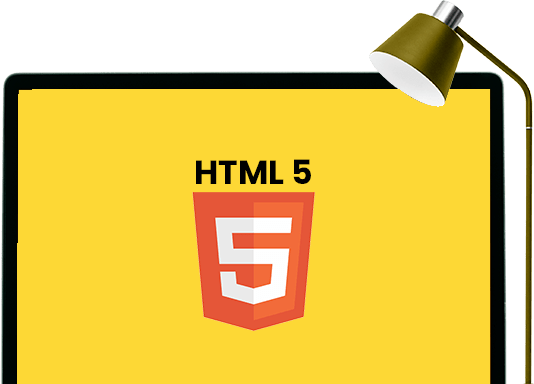Baeugi News Hub
Your source for the latest news and insightful articles.
HTML5 Development: Code Your Way to Web Glory
Master HTML5 development and unlock the secrets to stunning web projects. Start coding your path to online success today!
Getting Started with HTML5: A Beginner's Guide to Modern Web Development
HTML5 is the latest version of the Hypertext Markup Language that provides web developers with powerful tools to create dynamic and interactive websites. Whether you're a complete beginner or looking to refresh your skills, this guide will walk you through the essentials of HTML5, covering its foundational concepts and new features. First, familiarize yourself with the document structure, which includes the <!DOCTYPE html> declaration, followed by the <html>, <head>, and <body> elements. Each of these elements plays a crucial role in defining the layout and semantics of your web pages.
One of the standout features of HTML5 is its support for new multimedia elements, such as the <audio> and <video> tags, which simplify the process of embedding media on your site. Additionally, HTML5 introduces semantic elements like <header>, <footer>, and <article>, which enhance accessibility and improve search engine optimization (SEO). To get the most out of HTML5, experiment with these elements and focus on writing clean, structured code. Consistent practice and exploration of new tools like CSS3 and JavaScript will further enhance your web development skills.

Top 10 HTML5 Features You Should Be Using in Your Web Projects
HTML5 has transformed the way we build and interact with web applications. Leveraging its powerful features can significantly enhance user experience and increase engagement on your projects. Here are the top 10 HTML5 features you should be utilizing in your web projects:
- Semantic Elements: HTML5 introduces new semantic elements like
<header>,<footer>, and<article>that help improve SEO and accessibility by providing clear structure to your content. - Canvas API: The
<canvas>element allows for dynamic, scriptable rendering of 2D shapes and images, making it perfect for creating graphics, games, and animations directly in the browser.
Other notable features include:
- Video & Audio Support: With the native
<video>and<audio>elements, you can easily embed multimedia content without relying on external plugins, improving load times and user experience. - Geo-location API: This feature allows you to access users' geographical location, enabling more personalized content and services.
- Offline Capabilities: Utilizing the Application Cache and Service Workers, you can create web applications that work offline, enhancing user experience in low connectivity situations.
How HTML5 Revolutionizes Web Development: Key Benefits and Best Practices
HTML5 has fundamentally transformed the landscape of web development by introducing a variety of features that enhance user experience and streamline the coding process. One of the most significant benefits is the inclusion of new semantic elements, such as <header>, <footer>, and <article>, which improve the structure and accessibility of web pages. Additionally, HTML5 supports multimedia natively with the <video> and <audio> tags, allowing developers to embed high-quality media without needing external plugins like Flash, thus providing a smoother user experience across different devices.
Embracing best practices in HTML5 development is essential for maximizing its capabilities. Developers should prioritize using semantic HTML, as it not only enhances SEO but also aids in screen reader accessibility, making content more reachable for all users. Furthermore, utilizing the canvas element for dynamic graphics and the local storage API for offline capabilities are modern techniques that add to the performance and functionality of web applications. By consistently applying these methods, developers can ensure that their websites are not only innovative but also scalable and user-friendly.